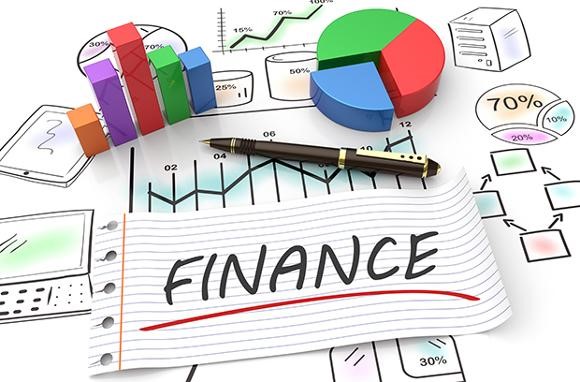How To Make Money in The Stock Market as an Individual Investor
Let’s start by reminding ourselves that over the long-term, there is no asset class that outperforms stocks. That being said, when it comes to stock investing, many individual investors do not perform so well. So much so that many financial professionals advise them to avoid pure and simple individual stocks and to stick with index funds.
At first glance, this recommendation seems to make sense especially when you consider the fact that studies have shown that that individual investors under-perform the market by roughly 5% per year in average. However index funds come with their own drawbacks.
Many stocks are simply not available through index funds, you have no control over your holdings and obviously you have to pay the fund’s fees. More importantly, individual investors who manage to develop and implement a consistent strategy end up with more chances to beat the indexes. Going through the most common mistakes made by individual investors should help you to avoid them and hence significantly increase your chances to make money in the markets.
Knowing What You Are Getting Into
- The ins and outs of being a shareholder:
Many people have a negative opinion of Shareholders. The popular perception is that employees work hard while the shareholders get all the benefits. This is of course a very simplistic analysis that fails to take into account the importance of the shareholders in business.
Companies sell shares to the general public in order to raise money to cover the current activity costs or to expand the business. Almost anyone has can become a shareholder since technically it only requires to buy one share. Once you are a shareholder, whether a large or a small one, you own a part of the company and you are able to participate in and benefit from the company’s future growth.
At first glance, this sounds great obviously but being a shareholder also means that you could lose all the money you have invested if the company goes bankrupt. Fortunately, there are ways to dramatically lower this risk notably with diversification. We will get back to this a bit later on.
- Setting realistic expectations:
Let’s start by introducing the concept of the risk-return trade-off which could be summarized by “low risk is associated with low return while high risk is associated with potentially high return”. Under normal circumstances, there is no such thing as a risk-free investment that provides high return. In other words, if you want to achieve high returns you need to be willing to take some risk.
Nowadays, a successful individual stock investor with a rather high-risk portfolio should be satisfied with an annual return including dividends of around 7%. This might not sound that great but if you consistently re-invest dividends and manage to maintain this performance rate over the years you will quickly realize that this is pretty respectable. If you want to achieve more than this, your best bet would be to invest in emerging countries and accept the higher risks involved.
- Risk profile determination:
There are many tools available online for free that can help you determine your risk profile. You simply need to respond to a few simple questions and it should not take you more than 10 minutes. Once your risk profile has been determined you know where you are heading.
There are many different types of profile, but to keep it short, your responses will either suggest that you are a high-risk investor, a medium-risk investor or a low-risk investor.
A high-risk investor should look to invest in riskier stocks such as emerging countries stocks and small cap stocks, while a low-risk investor should focus on blue chips stocks with low bankruptcy risk or simply avoid stocks at all by looking at other types of assets. A medium-risk investor should have a mix of high-risk and lower-risk stocks.
Putting in Place The Right Strategy
- Stock-picking process requires basic financial knowledge:
One thing for sure, whatever your risk profile can be, no one wants to buy overvalued stocks. Problem is that, by definition, it is extremely difficult to determine whether a stock is overvalued, undervalued or fairly priced. One of the most common mistakes made by individual investors is to assume that a stock with a low price is necessarily cheap. Actually, the absolute price of a stock is almost meaningless and this is a perfect example of a rookie mistake that could easily be avoided by acquiring basic financial knowledge.
Before entering the stock market, you need to be able to read a balance sheet and to be familiar with key financial measures such as the Price-to-Earnings ratio or the dividend yields. This may not sound exciting and it may even scare you a little bit but the good news is that there are really good websites out there where you can learn a lot in a short period of time. Once again, the primary goal being to avoid the most common rookie mistakes and not becoming some sort of Financial expert.
- Always keep in mind the benefits of diversification:
Another common mistake that individual investors tend to make is to ignore the importance of diversification. We have all heard the idiom: “Don’t put all of your eggs in one basket” … well, that’s what diversification is all about. Diversification is of primary importance because it has the potential to reduce risk while maintaining the return unchanged.
Trying to obtain an optimal diversification can be extremely complex and requires technical knowledge but the good news is that it is rather easy to build a well-diversified portfolio simply by using common sense. The simplest way to achieve this is to hold several stocks spread across various industries and sectors. The exact number of stocks you should hold is difficult to determine but you should be able to reach a satisfactory level of diversification with around 10 stocks.
Remember however that even though diversification minimizes risk it does not eliminate it. Indeed, diversification can help you reducing the risk associated with a specific company (unsystematic risk) but not the risk associated with the markets as a whole (the systematic risk).
- Avoid Day Trading and adopt a long-term horizon approach:
Many people get excited when they start trading. They want to buy and sell shares in a matter of hours or even less just like the traders they see in movies. This is what is called Day Trading and it is certainly the best way (with leverage) for an average individual investor to lose a lot of money in a very short period of time.
Day trading is about reactiveness to financial news and unfortunately you are not alone in the game. Investment banks hire the best traders and use advanced algorithms and a fleet of extremely powerful computers. Let’s be clear, these programs can react so quickly that you will always end up lagging behind them. In addition, this strategy would involve a large number of trades and this would not come for free. In fact, the more transactions you make the more you have to pay your broker.
Being successful at Day Trading might not be impossible but the odds are stacked against you. On the other hand, long-term investing has many benefits. It’s a much easier strategy to implement, you will end up paying less tax, and if you re-invest your dividends, compounding will be your best ally.
Bottom line:
You do not necessarily need to become a financial expert to be successful on the stock markets but you need to understand the basics. You also need to define a strategy and stick to it. Finally, you need to invest with a long-term horizon and try to remain calm during crisis which is easier said than done.
Once you feel at ease with the basic financial notions, that you have determined your profile and have defined a strategy, the final step is to find a brokerage account and start trading. You do not even need a large sum to start with, you can start with a small amount and add money into your portfolio regularly. Investing might not be so difficult after all.
+++
About the author:
Vivian Montet
I am holding an MBA in Investment Management from Pace University, New-York, with an overall GPA of 3.72 and a Major GPA close to 4. I am a member of the international business honour society Beta Gamma Sigma. I also hold a French Master’s degree in Portfolio Management. I am now enrolled in a postgraduate diploma in financial strategy from Said Business School, Oxford University. I have worked for a number of financial companies in France, New York and London such as Commerzbank, PricewaterhouseCoopers and BNP Paribas. I am now working for Anh Thomas Investment & Management Consulting Co., Ltd, a small advisory financial firm incorporated in Vietnam and in Delaware. Anh Thomas is constantly looking for the best worldwide investments opportunities for its clients and is currently focusing on the Vietnamese stocks markets and the Houston real estate market.






















